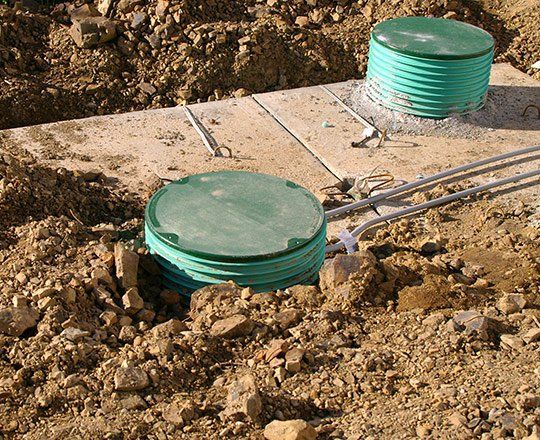Considering a conventional septic system? Turn to Dowdy’s Well & Septic Service. We design and install conventional septic systems throughout Richmond, VA, and the surrounding areas. Almost 20 million housing units sheltering approximately 29 percent of the U.S. population (1.7 million or 38 percent of the homes in Indiana) dispose of domestic waste through on-site disposal systems. Approximately 85 percent of these systems are conventional septic-absorption fields, making them by far the most common on-site disposal method. Contact Dowdy’s Well & Septic Service today to learn more about conventional septic systems. Give us a call at
(804) 795-1105.

Is a Conventional Septic System Right For My Property?
Conventional septic systems, while common, are not suitable for all areas. Among the limitations which might preclude the installation of a conventional system are high groundwater tables, shallow limiting layers of bedrock or fragipan, very slowly or rapidly permeable soils, topography, and lot size.
Where suitable, however, conventional septic-absorption fields will remain common for many years to come because of their relatively low initial cost and low operating cost. They have proven very satisfactory when properly located, designed, installed, and maintained. Your county government has outlined proper procedures to ensure the satisfactory performance of a conventional septic system.
Things To Know Before Installing A New Septic System
Before arranging for installation, contact your county extension office or county health officer for the names of experienced installers, and consult homeowners who have had good performance from their systems over a number of years for the names of competent installers.
All soils within the boundaries of the property should be identified to evaluate their suitability for an on-site soil absorption field by a knowledgeable professional. The absorption field should be in the most suitable soils and should even have location priority over a new home. The absorption area should also be one that sheds water. The long axis of the soil disposal area should be oriented parallel to the contours of the slope (i.e., lines 9f equal elevation). Areas where the long axis would run up and down the slope or where wastewater movement would converge should be avoided. Proper orientation of trenches on complex slopes. Traffic and construction must be avoided over and immediately downslope from the soil disposal area to prevent compaction and to minimize frost penetration.
Need more information about conventional septic systems? Call (804) 795-1105.
